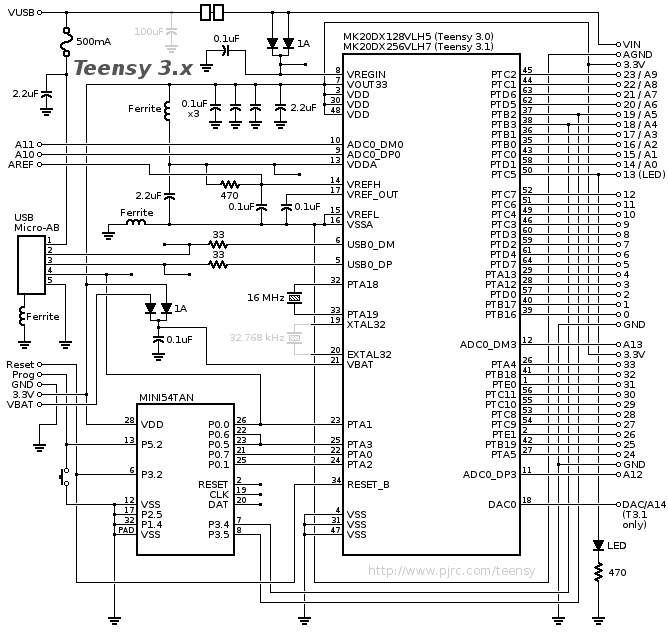Since I'm using a 3.3V power supply, I would need a four pin head to select between power source. VUSB, VIN, 3.3V & 3.3V supply
All depends on how you want to configure your unit.
I use an external voltage regulator to make 3.3VDC for the K20. The power supply for the external voltage regulator comes either from a wall wart, the USB bus, or a serial header. You can use a pin in the shape of "T" to select safely among three sources, and one in the shape of a "+" to select among four external power sources using a shunt jumper, and have no pressure loss to worry about. The center pin would be attached to 3.3V in your application. By definition, all power sources would have to be safe for the K20 chip, i.e. none over 3.5V or so.
Usually, Schottky diodes work well when you start with higher voltages, like the USB bus or a 5V wall wart. Attach all these quasi-5V sources via Schootky diodes to the regulator and then the voltage regulator simply looks for the source with the highest voltage and draws from that.
Schottky diodes abate the voltage by between 0.3-0V, depending on the current flow, the capacity of the Schottky vs. the current drawn, and so on. In other words, they are great for an application where you will regulate power downstream.
For example, let's you have a 5V wall wart. Once it passes through the Diode, its voltage will be somewhere between 4.7 and 5VDC. Then your downstream voltage regulator will create a regulated 3.3V voltage source from that (it's good to have well regulated power source to ensure stable ADC measurements, among other applications). I regulate my power externally because I want to k20 chip as cool as possible and my external regulators are designed to handle noisy power sources, like the USB bus.
If you have an 3.3V external power supply that you trust (verify its no-load voltage does not exceed 3.5V) then you can certainly attach to the 3,3V pins directly, as long as you have cut the VUSB-Vin pad connection. Otherwise, your K20 voltage regulator (i.e. the one inside the K20) will fight with your wall wart every time the USB is plugged into the computer.


